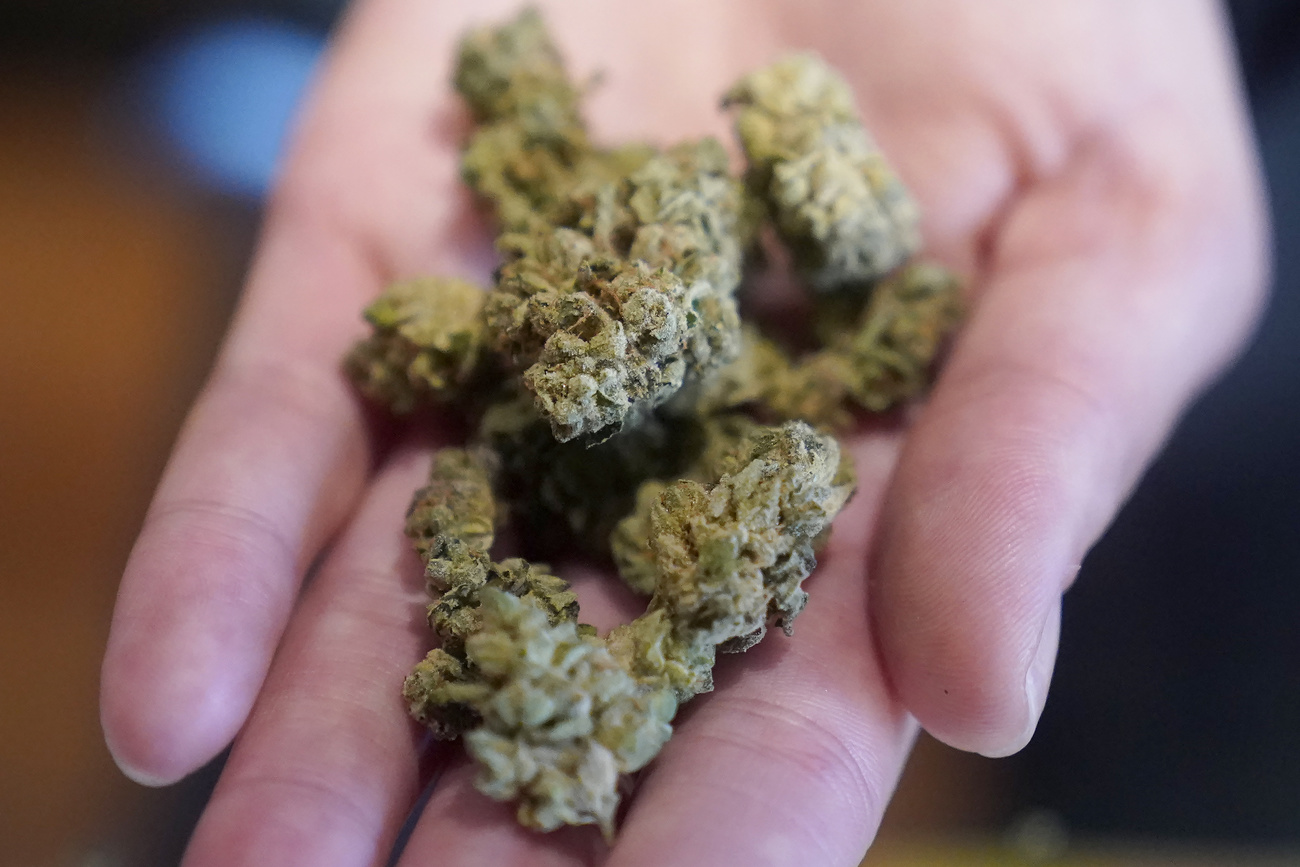Ticino and the hemp boom: seven unforgettable years

Between 1996 and 2003, marijuana cultivation and sales thrived in Ticino, propelled by the ingenious loophole of "scented bags". This seven-year chapter ended with a high-profile police crackdown, exposing a tangled web of state inaction and opportunistic entrepreneurs.
The story’s climax nearly turned into a farce. Following months of police raids that resulted in massive hemp seizures stored in a military depot, an unforeseen theft occurred. On the night of October 26, 2003, eight individuals armed with blowtorches and chainsaws infiltrated the Polveriera depot in the Arbedo municipality in canton Ticino. After a gruelling effort to bypass locks and security doors, they made off with a monumental stash of confiscated hemp – enough to fill three vans.
Their triumph was short-lived. Police swiftly traced the rented vans, uncovering the loot hidden in an underground tunnel in the Verzasca Valley. This botched heist marked a fittingly chaotic finale to Ticino’s tumultuous hemp saga, a tale steeped in contradictions, blurred legal lines and rapid societal shifts.
A boom fuelled by loopholes
For seven years, hemp became Ticino’s “green gold”, transforming the region with unprecedented speed. Profits soared thanks to a simple yet shrewd concept: hemp sold as deodorising sachets for wardrobes, marketed similarly to lavender. Exploiting ambiguities in Swiss narcotics law, which banned hemp only when explicitly intended for narcotic use, sellers justified their products with creative purposes such as decorative dried flowers, bath additives, and potpourri.
The first hemp shops in Ticino opened in 1996, inspired by similar ventures in other Swiss cantons. Shops like Il Canapaio in Lugano-Cassarate and Biosfera in Locarno paved the way for others. Public sentiment, shaped by the fallout from Zurich’s infamous heroin crisis and the closure of drug hotspots like Platzspitz and Letten, leaned towards decriminalisation of soft drugs.
Entrepreneurs exploited the lax enforcement, labelling their products as non-narcotic while everyone, including the authorities, tacitly understood their true purpose. This veneer of legality fuelled a booming market, with long queues at shops and skyrocketing revenues. Hemp cultivation transitioned from a clandestine operation to a quasi-legitimate industry, complete with invoices and VAT payments.
A region transformed
Ticino’s favourable climate and struggling agricultural sector made it fertile ground for hemp cultivation. Farms shifted from traditional crops to hemp, reaping massive profits. On the Magadino Plain, yields from 1,000 square metres of hemp outpaced traditional crops by more than sixfold.
This boom brought rapid industrialisation. Greenhouses and indoor facilities sprang up, often guarded by armed personnel, watchdogs, and surveillance systems. Labour demand surged, with Regional Employment Offices even funnelling the unemployed into hemp-related jobs, further entangling the state in the burgeoning industry.
Meanwhile, international media hailed Ticino as the “new Amsterdam”, attracting hemp tourists who filled hotels and campgrounds, even in the low season. Yet, this influx also brought friction, with local communities increasingly vocal about public nuisance and law enforcement overwhelmed by the scale of the phenomenon.
The crackdown
By 2000, mounting pressure prompted a crackdown. Public prosecutor Antonio Perugini led efforts to expose the charade of the hemp trade. His argument was blunt: if hemp was merely for deodorising wardrobes, why restrict sales to adults?
In March 2003, Operation Indoor dealt a decisive blow. Over six months, 198,000 hemp plants, four tonnes of processed marijuana, and CHF4 million ($4.5 million) in cash were seized. Shops were shuttered, and 130 people jailed. The operation exposed the scale of Ticino’s hemp economy but left lingering questions about the authorities’ delayed response.
A missed opportunity
Critics argued that the authorities could have acted earlier, as other Swiss cantons had. A Federal Court ruling in 1988 had already established the concept of “possible intent”, recognising that sellers of hemp “scented bags” likely knew their products were being used as narcotics.
Ticino’s hesitation allowed the trade to flourish for seven years, creating a boom-and-bust cycle that upended the region. By the time action was taken, the damage was done, and the authorities faced accusations of complicity in prioritising economic gains over legal clarity.
The rise and fall of hemp in canton Ticino remains a cautionary tale of opportunism, regulatory ambiguity, and societal complacency. What began as an experiment in creative loopholes ended in controversy, with an entire region left to grapple with the aftermath of its “green gold” rush.
Translated from Italian using DeepL/amva/ts

In compliance with the JTI standards
More: SWI swissinfo.ch certified by the Journalism Trust Initiative









You can find an overview of ongoing debates with our journalists here . Please join us!
If you want to start a conversation about a topic raised in this article or want to report factual errors, email us at english@swissinfo.ch.